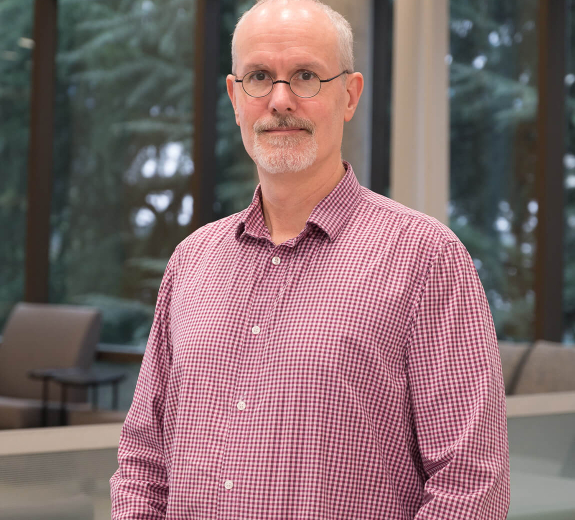Why Do Immune Cells Attack Harmless Bacteria?
Dr. Lord started by focusing on how the immune system interacts with E. coli. Everyone has these bacteria in their colon and they typically cause no harm. However, people with Crohn’s disease often have an immune response to an E. coli protein called OmpC. This almost never happens in people without Crohn’s disease.
The research team found that people with and without Crohn’s disease had immune cells called T cells that react to OmpC. However, people without Crohn’s disease made a molecule called IL-10, which is known to control inflammation in the intestines and other organs.
“Understanding why these cells don’t make IL-10 in people with Crohn’s disease could help us understand why the disease happens,” Dr. Lord says. “We couldn’t have gotten this research started without the funding from BRI’s Gut Immunity Program that helps get studies like ours off the ground.”
A Team to Back a Bold Study
Eager to learn more, Dr. Lord mapped out an ambitious proposal to study the nuances of these E. coli-specific immune cells. The team planned to examine DNA, RNA, and which genes were turned on and off.
But the NIH initially rejected the proposal, saying Dr. Lord’s team needed more analytical support to process these huge swaths of data.
Dr. Lord didn’t give up. He joined forces with BRI’s Center for Systems Immunology, which uses the latest tools to process vast amounts of data. With center director Peter Linsley, PhD, and bioinformatician Hannah DeBerg, PhD, on his side, he resubmitted the grant and got a perfect score.
“Peter and Hannah are experts at finding signals in the noise, and there’s a lot of noise when you are analyzing billions of DNA sequences,” Dr. Lord says. “Partnering with them was the difference between the NIH not funding this grant and giving it a perfect score.” NIH scores grant proposals to measure their potential to “advance the field and fit the NIH mission to improve health through science.” Perfect scores are uncommon, which underscores the potential impact of this work — and the possibilities that arise when experts in immunology and bioinformatics come together at BRI.
New Treatments and Prevention
The research team is now hard at work. They’re using tetramers, an innovative tool invented at BRI, to find and isolate the attacker cells so they can closely examine them. By synthesizing the data and identifying patterns, they hope to shed light on how and why Crohn’s disease happens.
“Finding out why people with Crohn’s disease don’t make IL-10 will open the door to new targets for medication,” Dr. Lord says. “It can help us explain or predict how Crohn’s happens. And it can move us closer to better treating or even preventing IBD.”
Philanthropy Fuels Early Research, Leads to Larger Grants
Scientists need preliminary data to qualify for NIH grants. But finding funding sources to test new, innovative ideas and collect preliminary data can be challenging. Dr. Lord’s early research about Crohn’s disease and IL-10 was made possible through a gift from an anonymous donor. This transformational gift established BRI’s Gut Immunity Program, which boosts our ability to explore groundbreaking ideas and expand our IBD research.
Dr. Lord’s study is one of the many BRI investigations that has secured funding from NIH thanks to foundational support from philanthropy. In fact, every dollar donated to BRI’s research ultimately leads to $6 in grant funding. We thank all of our donors for propelling breakthrough discoveries that will improve treatments, close the gap toward cures, and ultimately improve the health and well-being of millions of people.




